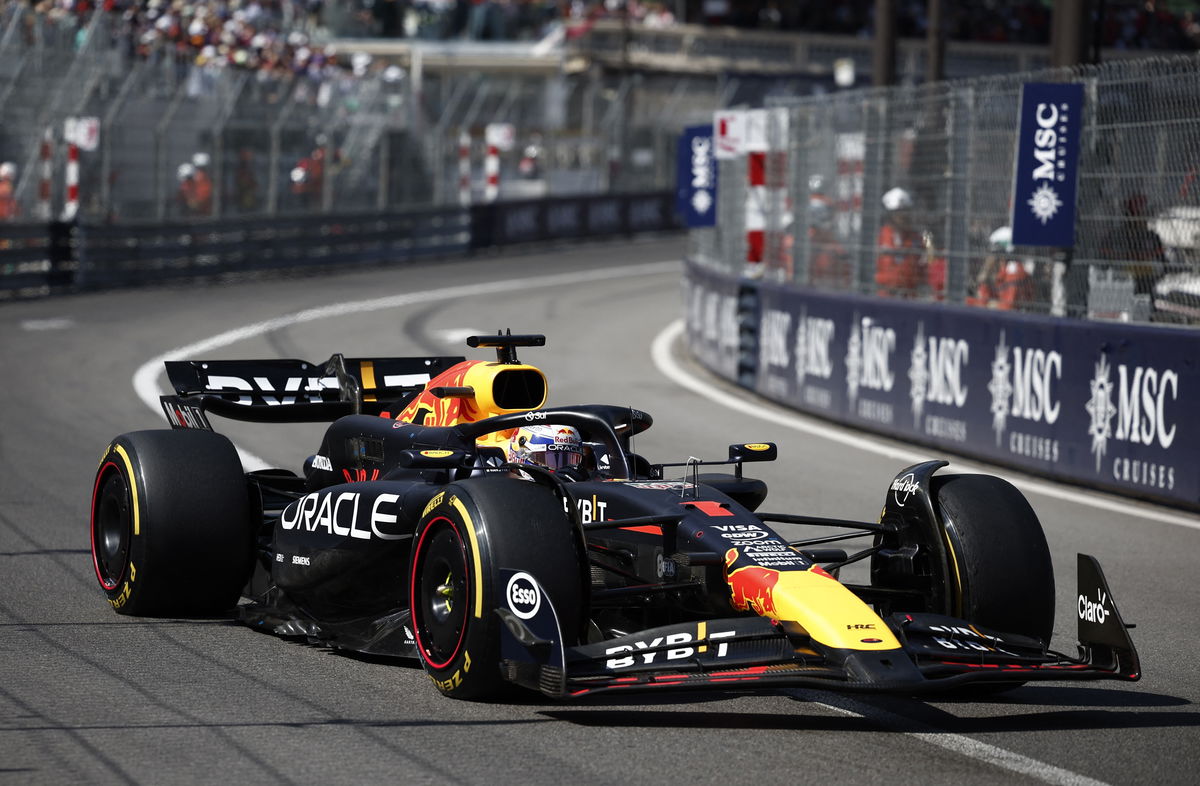
Reuters
Formula One F1 – Monaco Grand Prix – Circuit de Monaco, Monaco – May 26, 2024 Red Bull’s Max Verstappen in action during the race REUTERS/Benoit Tessier

Reuters
Formula One F1 – Monaco Grand Prix – Circuit de Monaco, Monaco – May 26, 2024 Red Bull’s Max Verstappen in action during the race REUTERS/Benoit Tessier
The much-awaited 2026 F1 Regulations are finally out after over a year of the FIA teasing and giving hints about what may or may not be. This will be the first major regulation change after the current ground effect era cars were launched in 2022. With the set of regulations out, the F1 team can finally start working on the chassis for the new orders and decide whether they want to compromise the upcoming development in favor of 2026.
Watch What’s Trending Now!
However, these regulations can be very technical and difficult to understand. But we’ve got you covered as we look at what effect they’ll be having on racing and the cars. Here are the F1 2026 regulations simplified. Let’s start with Aerodynamics and Chassis.
ADVERTISEMENT
F1 2026 Chassis and Aerodynamic Regulations: Smaller & Lighter cars with Active Aero
F1 has been targeting the entertainment and spectacle side of the sport even more since Liberty Media’s overtaking. Hence, close racing has been prioritized, and for the same reason, the 2022 regulations introduced the ground effect. While the racing has gotten closer, some loopholes and aspects discovered by the teams have led to performance gaps within the grid and 2026 will further be looking into those issues.
Welcome to the future 👀
The FIA have unveiled the regulations of the FIA Formula 1 World Championship for 2026 and beyond #F1 @fia pic.twitter.com/OM2TJ2rIqL
— Formula 1 (@F1) June 6, 2024
However, the biggest change on the aerodynamic side is the introduction of active aero. Currently, F1 has the DRS that aids in overtaking the straights, but for the 2026 regulations, they binned DRS in favor of active aero. While only one element of the rear wing is used to move with the activation of DRS, active aero will see multiple elements move on the rear wing. The rear wing itself will have three elements.
ADVERTISEMENT
To counter the loss of downforce from the rear, when active aero is in low drag mode, changes to the front wing also had to be made. As a result, the front wing will also feature two elements with active aero, which will move in combination with the rear wing. In regular mode, the Active aero will be in high downforce mode but as soon as it is activated, the front and rear wing elements will move into low downforce and low drag mode.
Top Stories
Adrian Newey’s Motorsport Masterpiece: RB17 vs Aston Martin Valkyrie, Which One Is Better?

3 Years After His Death, Niki Lauda’s Wife Brutally Disrespects Him to Initiate $32,000,000 Battle Against Own Children

Who Is Canadian F1 Billionaire Lawrence Stroll’s Daughter & Heiress Chloe Stroll?

Who Is Oscar Piastri’s Father, Chris Piastri? Co-Founder of Multibillion Dollar Automotive Company

Fans Dig Up the Past to Troll Famous ‘Monaco Youtuber’ Nico Rosberg After Latest Accomplishment

We saw at the 2024 Monaco GP how hard the overtaking was for the wide and heavy F1 cars. For the 2026 regulations, F1 has introduced smaller and lighter cars. The cars’ width will be reduced by 100 mm from 2000 mm to 1900 mm, and they will shorten the wheelbase by 200 mm from 3600 mm to 3400 mm. The overall weight of the cars will also be reduced by 30 kg.
ADVERTISEMENT
Changes will also be made to the floor of the cars where the floor will be partially flat, leading to a reduced ground effect. Diffusers will also be simplified as we’ve seen over the last couple of years when teams tried to innovate a lot around the diffuser area of the car to maximize performance at the loss of creating more dirty air.
Talking of dirty air, they will simplify the end plates of the front wings to reduce the outward flow even more. Teams love to create an outward flow from the end plate to smooth the airflow over the cars, but the new endplates will seek to remove these intrinsic innovations and make the wings do what the regulation supposedly asks them to. All these changes will result in an approximate 30% loss of downforce, but reduce drag by 55%.
Speaking of chassis, they have introduced some safety innovations that will make the crash structure even safer, especially the front crash structure. The structure will split into two parts after absorbing an impact and will leave behind a significant amount of the structure for any further impacts. Rollover safety changes will also be made. However, these will not be any heavier than they already are.
ADVERTISEMENT
Now, let’s have a look at the power unit side of things.
Power Unit Regulations: MGUH removed, Sustainable Fuel and Increased Output from Batteries
F1 introduced the hybrid power unit for the 2014 F1 season. Since then, no major changes have been made to them. For the first time in over a decade, such major changes have been introduced to the regulations. F1 will keep the 1.6L V6 Turbo Hybrid system configuration but have made multiple changes to it, keeping in mind the three objectives for the 2026 regulations.
ADVERTISEMENT
First look at F1 2026 regulations & generic car design
Lighter cars (30kg lighter)
Shorter, narrower chassis to be nimble, less drag
Active aerodynamics
No DRS – New 'Override' mode for battery instead
No Wheel Arches
Bargeboards Are Back
Simpler floors
Narrower tyres
Improved… pic.twitter.com/trRcuLKbfL— Aarav (@_aarava) June 6, 2024
The three objectives were to bring down the cost, make the engines sustainable, and focus the development on the electrical deployment of the engine. Hence, FIA came up with regulations to remove the MGU-H from the ICE (Internal Combustion Engine) which will significantly lower the cost.
The next point was sustainability for which the regulations have mandated the use of sustainable fuels. This was forthcoming and was well known, hence teams like Aston Martin decided to partner with oil giants like Aramco, which will further help with the development of sustainable fuels. The fuel flow to the engine has also been restricted which will reduce the power output of the ICE.
ADVERTISEMENT
To counter this issue and to take care of the third objective, the power generated from the electrical components has been increased significantly. Larger electrical motors and batteries will be implemented into the power unit, making the ERS management much more important. Earlier, the power split between ICE and the Electrical system used to be 80:20, which will now be closer to 50:50.
The ICE will produce somewhere in the range of 400 kW compared to the 550 kW of the current ICE, whereas the MGU-K output will increase from 120 kW to 350 kW. A manual override mode will also be introduced to help a following car overtake the car in front. This will act like DRS, but instead of reducing the drag, it will give an electrical boost to the following car in certain areas around the track to help with overtaking.
Talking out power output, the tire width has been reduced at both the front and rear, making it difficult for the drivers to put down a huge amount of power. The electrical systems will produce loads of instant torque, making it difficult to put the traction down. They can reduce the front tire width by 25 mm, whereas the rear tire width can be reduced by 30 mm.
ADVERTISEMENT
What do you make of these new regulations? Are the regulations drastic enough to make the racing closer? Will there be any issues with energy recuperation with the new power unit?
ADVERTISEMENT
ADVERTISEMENT
ADVERTISEMENT

